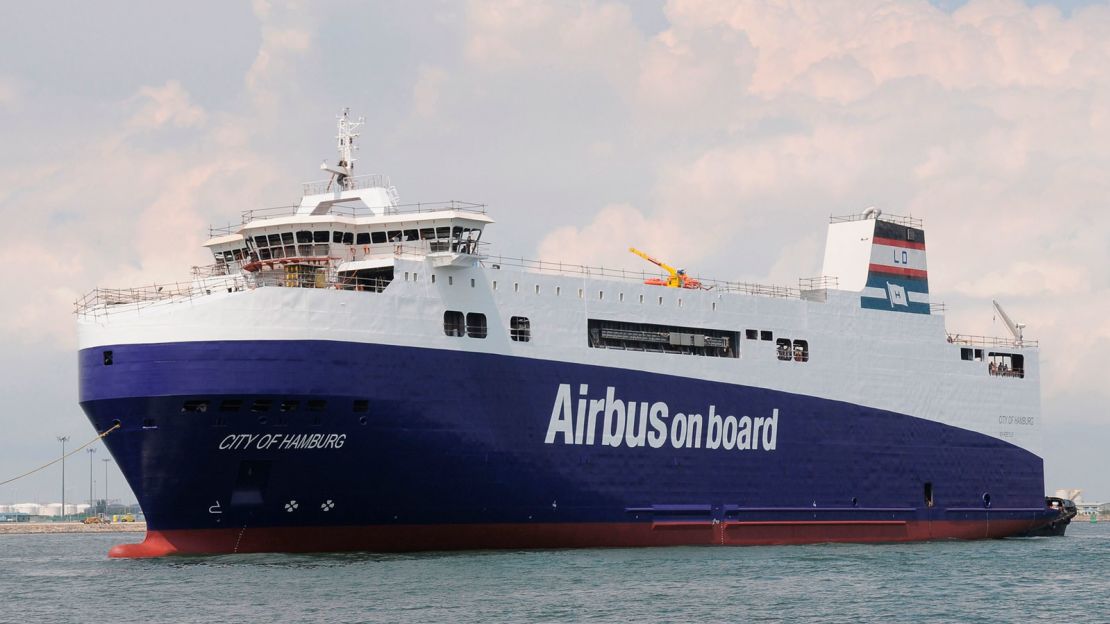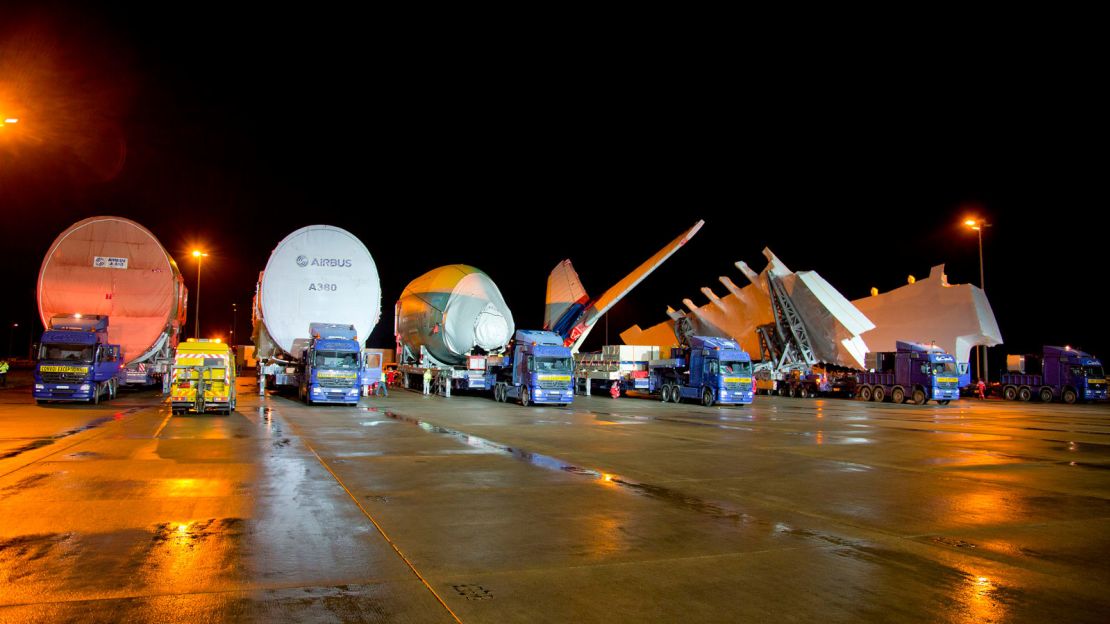It’s the middle of the night in the sleepy French town of Lévignac, in the countryside just outside of Toulouse.
There are people lined up along the town’s main road, waiting for a parade to begin. But there are no marching bands or decorated floats at this 1 a.m. event.
Instead, a convoy of six trucks appears, each pulling an enormous trailer carrying a massive component of the world’s largest passenger airliner, the Airbus A380.
The crowds applaud as the plane’s wings, fuselage sections and horizontal tailplane slowly inch their way through the provincial town – a procession that’s repeated every few weeks.

Giant airplane kit
The Final Assembly Line (FAL) for the double-deck, 500+ passenger A380 is in the Jean-Luc Lagardere plant, a purpose-built facility at Toulouse-Blagnac Airport in southern France.
It’s also the site of the Airbus corporate HQ and flight test department, and where single-aisle A320s and wide-body A330 and A350s are built.
Since its first delivery to Singapore Airlines in 2007, more than 200 A380s have rolled off the line in Toulouse. Most of the planes, more than 100 aircraft, are flown by the Dubai-based Emirates airline.
As with other Airbus projects, the manufacturing of components for the A380 are spread among the company’s facilities throughout Europe, and parts come from suppliers all over the world.
The megajet’s wings are built in Broughton, Wales; fuselage sections come from Hamburg, Germany and Saint-Nazaire, France; the horizontal tailplane is manufactured in Cadiz, Spain; and the vertical tail fin is also made in Hamburg.
Getting these huge pieces of airplane to the FAL is a tightly orchestrated logistical process, overseen by Arnaud Cazeneuve, oversize surface transportation manager for Airbus.
From rivets and bolts, to seats and engines, an A380 is made up of about four million individual parts produced by 1,500 companies from 30 countries around the world.
“One A380, to me, is six components – three fuselage sections, two wings, and the horizontal tailplane,” says Cazeneuve.
Ro-ro ships

Airbus has a fleet of three specially designed vessels to transport the A380’s major components to a floating pontoon dock in Pauillac, just inland on France’s Atlantic coast.
The roll-on, roll-off – or ro-ro – ships carry the six completed A380 sections from Airbus facilities in Wales, Germany, France, Italy and Spain.
“There is no crane activity needed,” Cazeneuve tells CNN Travel.
“Each production plant puts the sections on the transport jig, and a special multi-purpose vehicle goes under the jig to move it.
“I don’t have to touch the section, just transfer the component from one transport means to another.”
Six by sea, one by air
While the six major components of an A380 are enjoying a sea cruise, the plane’s vertical tail fin flies from Hamburg to Toulouse.
The fin’s first flight isn’t on the outside of a plane, but inside one of Airbus’ A300-600ST Super Transporters – better known as the Beluga.
These highly modified cargo carriers started life as wide-body passenger jets. Each plane’s cockpit has been dropped to accommodate a cavernous cargo bay that’s been grafted atop the fuselage.
The fleet of five Belugas link Airbus facilities in Europe, carrying components to FALs for all of Airbus’ planes.
Even though the Beluga is designed to carry oversized cargo, it can only accommodate the vertical fin of the A380 – all of the other major sections of the megajet are just too big.
Meanwhile, in Pauillac, the A380’s six major components are unloaded, and then moved to one of two barges for the next stage of the trip to Toulouse.
The barges make four return trips over eight days, traveling 95 kilometers up the Garonne River to Langon. But from there, it’s still another 240 kilometers to the FAL in Toulouse.
As each major component arrives in Langon, it’s transferred to a specially designed trailer. Once all six sections arrive, the road trip to Toulouse can begin.
Road trip

Traveling only at night, the convoy takes two evenings to cover the 240 kilometers to Toulouse, on the Itinéraire à Grand Gabarit (IGG) – a secondary-road route that was modified to handle the extreme size of the A380’s sections.
“Between Langon and Toulouse, before the A380, there was a road managed by the French authorities,” says Cazeneuve.
“When we developed the project, we came to the authorities saying, ‘we would like to transfer these big components on this route.’”
Airbus paid 57% of the road upgrade cost of 171 million euros ($205 million), and the government paid the remaining 43%, recognizing the economic benefit brought to the region by the A380 project.
Roads were widened, and obstructions shifted from the roadside. Over 6,500 trees were planted, three to four times the number that were removed.
Dedicated bypass roads were built, to make it easier for the convoy to navigate around some of the 21 towns and villages on the route.
As well as a slew of other changes, roundabouts were rebuilt to allow the trucks to pass directly over the center of the traffic circles.
More than 35 kilometers of bicycle and horse paths were created, utilizing the new wider right-of-way.

Hero’s welcome
“When you’re driving on the road, you feel that this is used by the A380,” says Cazeneuve. “You know that this is something different than a normal road.”
A calendar showing the planned convoy dates is available on the IGG website, and local residents are reminded three days before each convoy begins its trip, via roadside display boards.
As the trucks move through the night, the route is closed in sections to regular traffic, for both the safety and security of the convoy – and then there’s the town of Lévignac.
Instead of using a bypass, the convoy travels directly though the center of the town. This is the one section of the IGG where each truck is accompanied by spotters, walking alongside the trailers – and for good reason.
“There is just 50 centimeters clearance on each side between the component and the buildings. People in the buildings are watching the components go by, right in front of their windows,” says Cazeneuve.
Once through Lévignac, it’s just an hour’s drive to the convoy’s final stop, at the FAL in Toulouse.
Although he might lose some sleep, Cazeneuve regularly heads out from Toulouse in the middle of the night.
“I go quite often to see the convoy, to see that everything is running well.”














